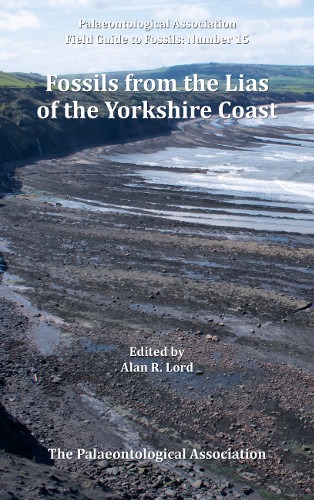Fossils from the Lias of the Yorkshire Coast
Palaeontological Association Field Guide to Fossils Number 15
Edited by Alan Lord

I have a soft spot for PalAss guides and have reviewed several in the past. As a collector myself, the amount of information about the relevant fossils is second to none, with black and white photos and descriptions of virtually everything the amateur or professional palaeontologist might need.
Fossils from the Lias of the Yorkshire Coast covers the marine sediments seen in the cliffs and scars of the Yorkshire coast, which form the thickest exposed sequence of the Lias (Lower Jurassic) in the UK. As anyone who has collected there will know (myself included), the rocks are extremely fossiliferous. They have also been studied since the nineteenth century, and the sedimentary sequence is important, as it provides information on the stratigraphy of the oil producing North Sea basins. It also contains the Global Boundary Stratotype Section and Point (GSSP) for the base of the Pleinsbachian Stage of the Lower Jurassic.
Each chapter is written by different experts in their fields, including frequent contributor to this magazine – Paul Taylor – who revisits (with Consuelo Sendino) one of his favourite topics – the folklore of fossils. In addition, there are chapters on the geologists who have worked the area, conserving the Lias of the Yorkshire coast and its stratigraphy.
Fossil subjects include all the usual suspects, that is, all the major marine fossils groups, including ammonites, nautiloids, belemnites, bivalves, gastropods, brachiopods, echinoderms, insects, decapods, microfossils, plants, bony fishes, pterosaurs, crocodylomorphs, ichthyosaurs, plesiosaurs and dinosaurs.
Fossils from the Lias of the Yorkshire Coast: Palaeontological Association Field Guide to Fossils Number 15, edited by Alan Lord, The Palaeontological Association (2019), London, 178 pages (paperback), ISBN: 978-0-901702-47-0